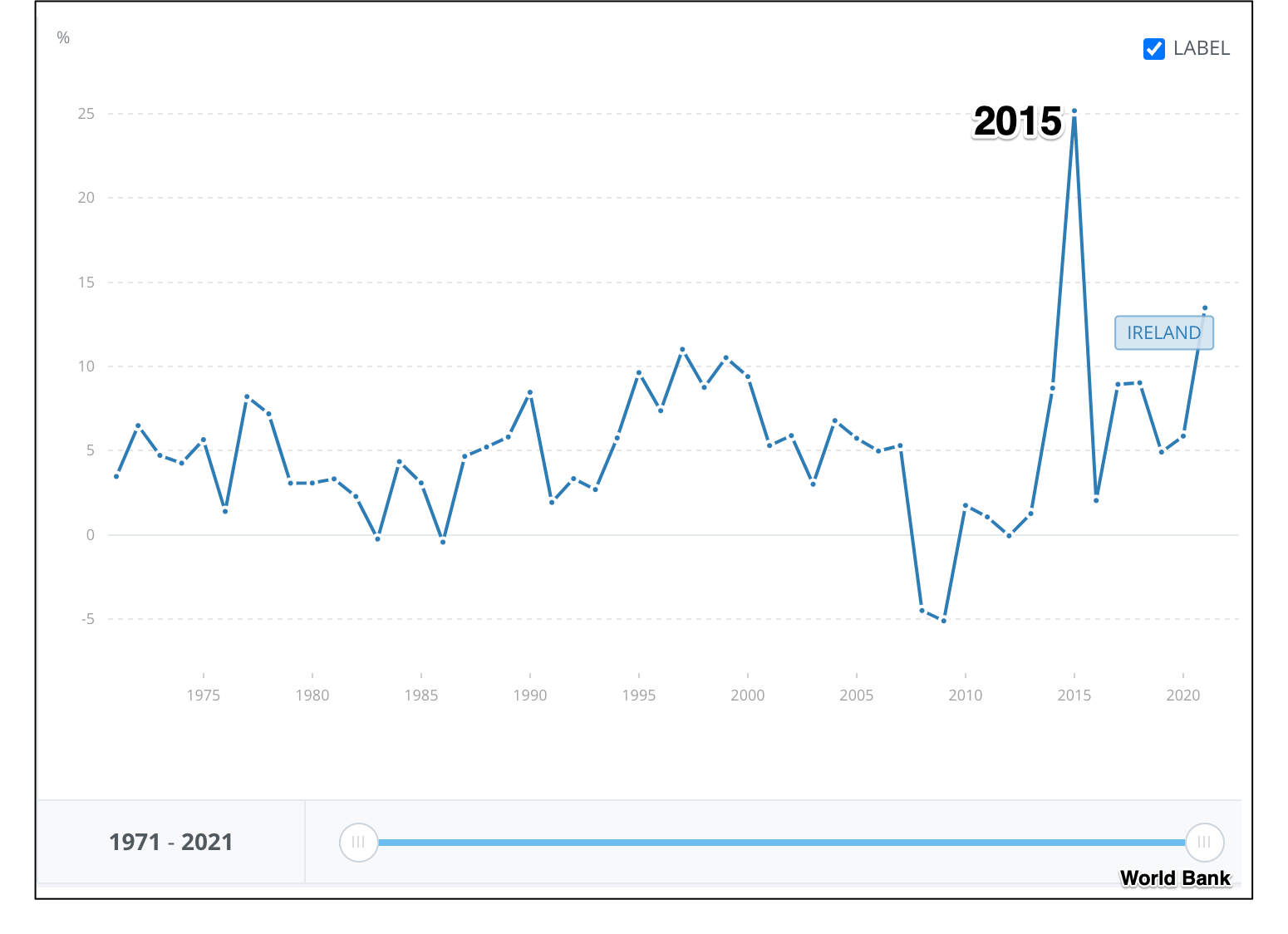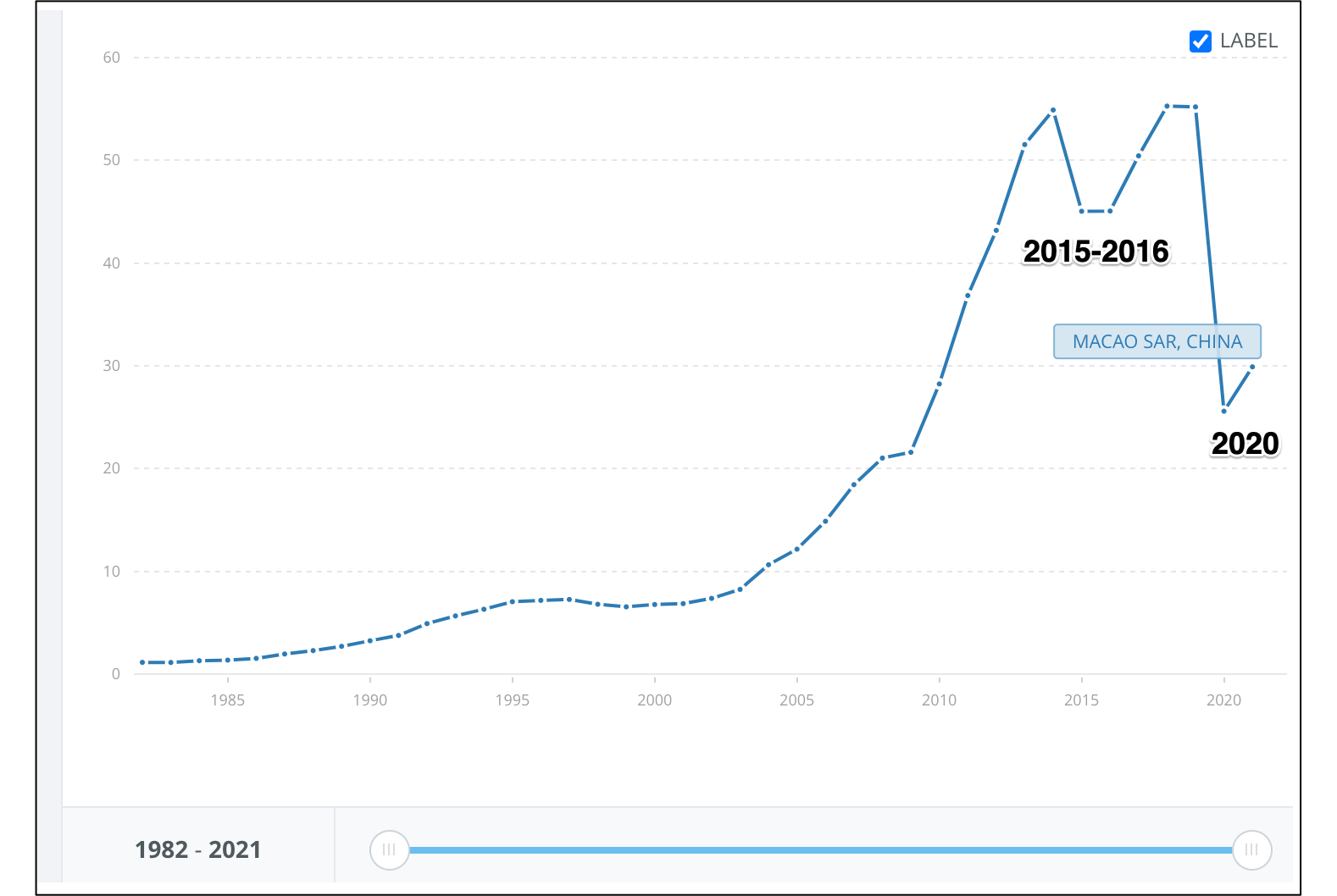
A New Way To Measure the GDP
August 23, 2022
What We (Might) Need To Know About Student Loans
August 25, 2022Sometimes a country’s GDP can pop up or plunge downward for unexpected reasons.
Let’s take a look.
GDP Ups and Downs
Ireland
During 2015, Ireland’s real GDP went up 26.3 percent. In current prices it skyrocketed a whopping 32.4 percent:
 Assuming that GDP numbers indicate the value of the goods and services produced by the Irish economy that year, we can ask what happened. The answers take us to Ireland’s relatively low corporate tax rate. Recognizing the huge money they would save, a slew of multinationals moved their intellectual property and headquarters to Ireland. In a March 2015 article, the Guardian tells us that Google, Pfizer, Intel and Apple had an Irish location. More precisely, they described the £615m data center that Apple =was building.
Assuming that GDP numbers indicate the value of the goods and services produced by the Irish economy that year, we can ask what happened. The answers take us to Ireland’s relatively low corporate tax rate. Recognizing the huge money they would save, a slew of multinationals moved their intellectual property and headquarters to Ireland. In a March 2015 article, the Guardian tells us that Google, Pfizer, Intel and Apple had an Irish location. More precisely, they described the £615m data center that Apple =was building.
Macao
Quite the opposite, Macao experienced a GDP 26 percent plunge:

In 2014, Macao’s per capita GDP was $89,000. To a large extent, though, so high a number depended on gambling revenue at its foreign owned casinos. So, when China waged an anti-corruption initiative, Macao’s second quarter (on annualized basis) GDP plunged by 26.4 percent. Somewhat similarly, in 2020, Covid had the same impact.
Our Bottom Line: The Gross Domestic Product (GDP)
When we combine consumption expenditures, gross investment, government spending and exports minus imports, we wind up with the GDP. As a yardstick of the goods and services that a nation produces, the GDP can provide a snapshot of national wealth.
However, for Ireland and Macau, we needed to look a bit more closely to see what the change in their GDPs signaled.
My sources and more: In a paper about health and wealth, Angus Deaton and Paul Shreyer included some quirky GDP facts. Looking for more detail, I found this OECD explanation and this Guardian article for Ireland. Meanwhile, the Economist told us about Macau. And lastly, please return to this econlife post on Nigerian “rebasing.”
![econlifelogotrademarkedwebsitelogo[1]](/wp-content/uploads/2024/05/econlifelogotrademarkedwebsitelogo1.png#100878)




